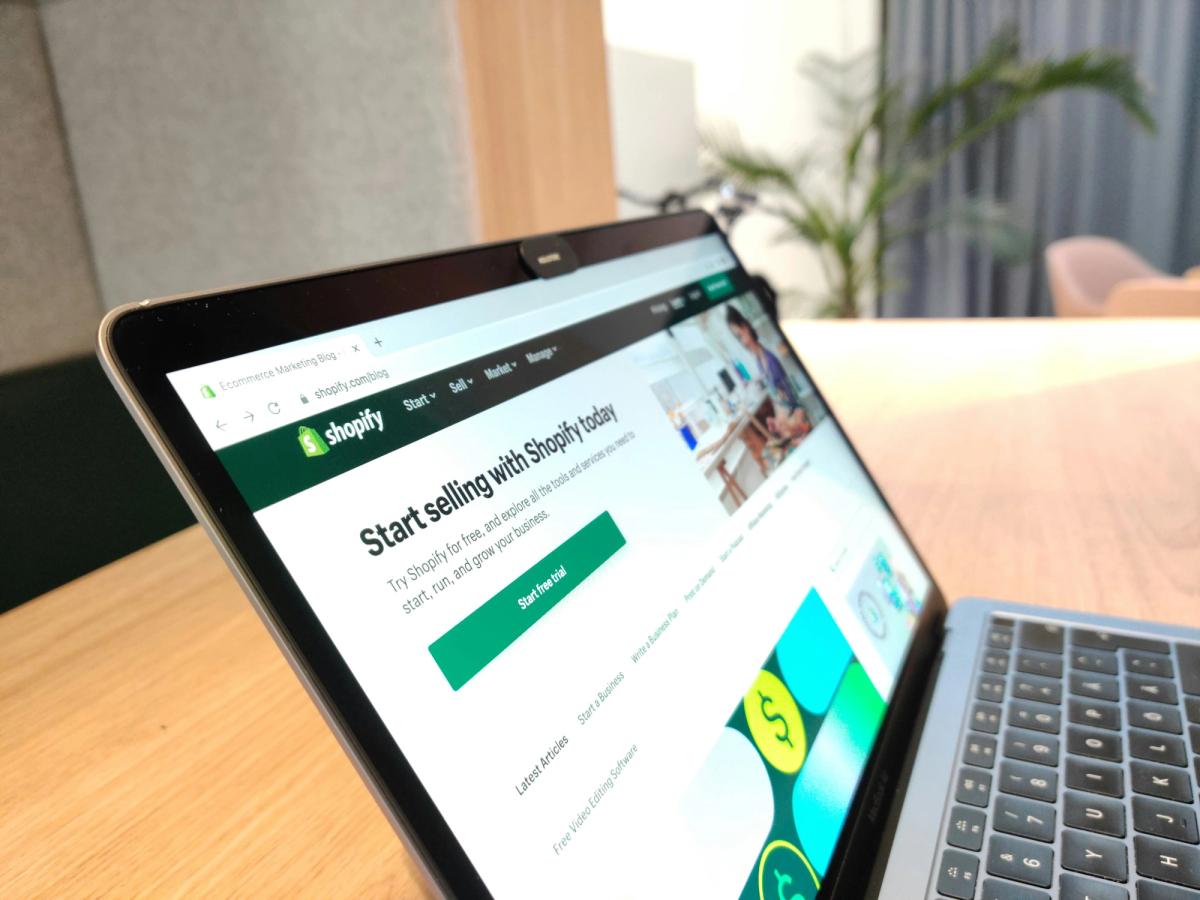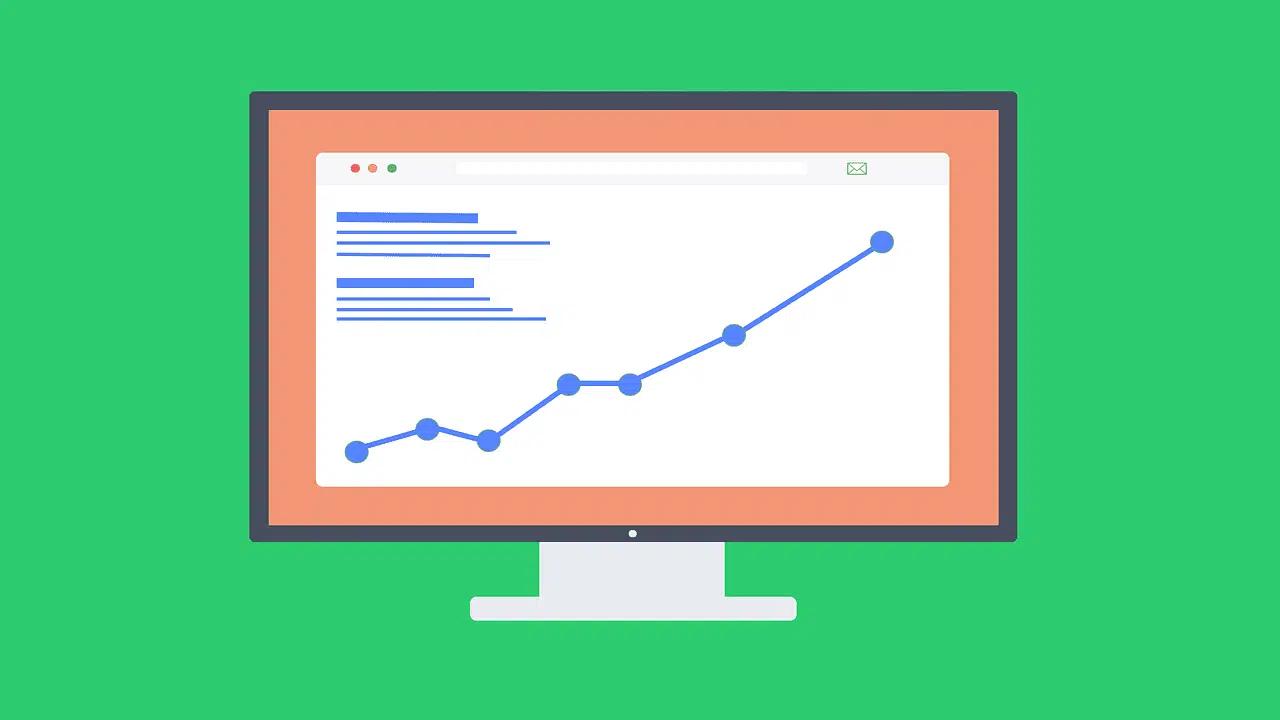Launching an online shop often means choosing between learning the tools yourself or hiring help, and few choices matter more than who builds your storefront. Within the Best Shopify Page Builders conversation, hiring a freelancer, agency, or certified Shopify expert can shape your custom theme, product upload process, app integration, migration, SEO, conversion optimization, and ongoing maintenance. This article will guide you through hiring someone to build your Shopify store, explain what each provider offers, and provide practical steps for a seamless store setup. To help with that store setup, PagePilot’s AI page builder creates professional pages fast, suggests layouts that improve conversions, and simplifies product upload and app integration so you can decide whether to hire a developer or take a more hands-on approach.
Why Hiring a Shopify Expert Can Be Worth It

With more than 4.6 million live Shopify stores worldwide, standing out is more complex than ever. When you hire someone to build your Shopify store, you gain focused time to run your business while a specialist handles setup, design, and technical work. That saves you hours spent wrestling with theme settings or troubleshooting Liquid code, and it moves your launch from trial and error to a controlled rollout.
What a Shopify Expert Will Actually Do for Your Store
A qualified Shopify developer or designer will set up the store, customize a theme or build a custom theme, and integrate apps and payment gateways.
Expect mobile-first layouts, page speed optimization, SEO-friendly product structure, and conversion rate improvements through straightforward navigation and checkout flows. They configure shipping and tax rules, import product catalogs, and connect analytics and tracking.
When You Should Hire Someone to Build Your Shopify Store
Hire when you plan to scale, when your catalog or custom requirements exceed DIY tools, or when conversion and speed are problems you cannot fix yourself. Hire before a major product launch, a marketing campaign, seasonal sales, or migration from another platform. If you lack the time or technical skills, or if you want a polished storefront that reflects your brand, consider bringing in a specialist.
How Hiring a Shopify Developer Affects Revenue and Customer Trust
Professional design and technical polish increase perceived credibility, reduce friction at checkout, and make product discovery easier. Page speed and mobile optimisation directly affect bounce rates and search visibility.
Proper app integration and clean code reduce conflicts and downtime. Those are the levers that influence average order value and repeat purchases, not just the look of your pages.
What to Expect from Agencies, Freelancers, and Shopify Partners
Agencies often provide end-to-end services:
- Strategy
- Design
- Development
- QA
- Ongoing support
Freelancers can be more cost-efficient for focused tasks like theme customisation or page builder setup. Shopify partners display badges or reviews that indicate their experience. Ask for a portfolio, client references, a clear scope of work, milestones, and a staging environment. Request documentation and access to assets so you can maintain the store in the future.
Cost Models and Delivery Details When You Hire a Shopify Developer
Common pricing models include fixed project pricing, hourly rates, or retainer support. Timelines vary from days for minor tweaks to several weeks for custom themes or complex integrations. Ensure the contract outlines deliverables, acceptance criteria, revision rounds, and post-launch support. Confirm who manages app subscriptions, maintenance tasks, and security updates.
Checklist to Help You Hire the Right Shopify Specialist
- Review portfolios for live Shopify stores and performance evidence.
- Confirm Liquid template and theme development experience.
- Ask about the page builders they use, such as PageFly or Shogun, and how they optimise pages for speed.
- Verify experience with SEO, structured data, and analytics setup.
- Check references for communication, deadlines, and support after launch.
- Define milestones, testing procedures, and rollback plans in writing.
- Agree on handover items: admin access, backups, documentation, and training for your team.
Questions to Ask Yourself Before You Start Hiring
- Do you need a complete redesign or targeted optimisation?
- Do you require custom apps or integrations with ERP, CRM, or fulfilment partners?
- How fast do you need results, and what budget will deliver the right quality?
Answering these questions will help determine whether you should hire an agency, a specialist developer, or a freelancer.
When You Should Hire Someone to Build a Shopify Store

When you build a new brand or refresh an established one, the store needs a clear visual identity, conversion-focused templates, and a reliable backend setup.
A Shopify expert or ecommerce developer handles theme customization, product page design, SEO friendly structure, payment gateway setup, and migration to Shopify or Shopify Plus when required. They also set up collections, inventory, analytics, and essential apps so marketing can run from day one.
Go Global: Hire Someone When Expanding Internationally
Expanding into new markets brings multi-currency pricing, multilingual stores, local payment methods, and tax and shipping rules that vary by country. A Shopify consultant configures Shopify Markets or localization apps, implements region-specific checkout rules, ties in local carriers, and tests translations and currency flows.
Fix the Leak: Hire When Conversion Rates or Store Performance Slip
Low conversion rates or slow pages cost real revenue and reduce ad ROI. Hire a Shopify developer or CRO specialist to run a technical and UX audit:
- Site speed work
- Image compression
- Theme bloat removal
- Checkout optimization
- App integration cleanup
- A/B testing
They will install analytics, heatmaps, and funnel tracking so you can see which fixes have the most impact.
Craft the Story: Hire When Branding and Product Storytelling Needs Professional Execution
Strong product pages and consistent brand voice build trust and lift conversion. Bring in a designer and copywriter who deliver high-converting templates, persuasive product descriptions, on-page SEO, and polished product imagery or custom sections that match your ads. They align visuals, copy, and UX so customers don’t hit the product page and drop off.
AI Page Builder for Fast Product Testing
PagePilot’s AI page builder will help you test products, ideas, and angles far faster. Give our AI a competitor or supplier URL, and we’ll create a high-converting product page from that site, upgrading the visuals using our AI Product Image function so you’re not competing with exact copy and images. Start a FREE Trial and generate 3 product pages for free today, no credit card needed.
Related Reading
- Does Shopify Host Websites
- Is It Worth Buying a Prebuilt Shopify Store
- How Much Does It Cost to Build a Shopify Website
- What is Custom Liquid Shopify
- Shopify Speed Optimization
- How to Customize Shopify Website
- Shopify Product Page Customization
How to Hire the Right Shopify Professional

Decide by scope, not by cost alone. If you require complex API integrations, custom apps, multi-store setups, headless architecture, or Shopify Plus scalability, consider hiring an agency with experienced project managers, designers, and developers. If you need a small catalog, basic theme tweaks, or a quick store launch, hiring a freelance Shopify developer is often faster and more cost-effective.
What to Look For in a Shopify Development Company That Actually Delivers
Check for a track record of building Shopify stores, not just websites. Look for case studies that demonstrate traffic, conversion, and revenue increases. Confirm they handle theme customization, app integration, payment gateway setup, migrations, speed optimization, and Shopify Plus if needed.
Evaluate their communication style, project management tools, and support options. Confirm pricing models, time estimates, and post-launch services before signing a contract to ensure a clear understanding of the terms.
How They Prove They Understand Your Business and Customers
A true Shopify partner asks specific questions about your products, margins, fulfillment, target buyers, and acquisition channels. They will map customer journeys, propose category structures, and suggest CRO and SEO steps tailored to your niche.
Ask them to outline a marketing plan for the launch and for the 90 days following. If they only discuss features and templates, they likely do not fully grasp your brand or your customers.
Spot a Strong Portfolio: What to Inspect in Past Shopify Projects
Open live stores in their portfolio on mobile and desktop. Check load times, checkout flow, mobile UX, and product pages. Ask for before and after metrics:
- Conversion rate
- Average order value
- Page speed improvements
Request examples of custom theme work, app builds, and integrations with ERPs, CRMs, or fulfillment partners. Request Git access or a code sample to evaluate coding standards and the use of Shopify Liquid and API best practices.
Read Between the Lines: How to Interpret Client Reviews and Testimonials
Look for reviews that name outcomes, timelines, and how the team handled issues. Favor repeat clients and long-term maintenance contracts. Check Shopify Expert Marketplace ratings, independent review sites, and LinkedIn recommendations for expert reviews.
Request two recent references and ask direct questions about timeliness, communication, and post-launch support. Negative reviews that mention missed deadlines or poor communication are red flags.
Run the Hiring Process Like a Pro: Briefs, Interviews, and Tests
Begin with a concise project brief that outlines goals, essential features, and deadlines. Shortlist three candidates and run 45-minute interviews. Ask technical questions:
- Experience with Shopify Liquid
- Theme development
- App integration
- Shipping and tax setup
- Migrations
Request a mini task or design sample relevant to your store. Require a written scope with milestones, deliverables, acceptance criteria, and a payment schedule before work begins.
Contracts, Ownership, and Project Management Essentials
Insist on a contract that names deliverables, intellectual property transfer, staging workflows, source control, and deployment procedures. Define who owns code, assets, and app licenses. Set acceptance tests and a warranty period.
Specify communication cadence, escalation points, and SLA for bug fixes. Use milestone payments tied to deliverables to align incentives.
Pricing Expectations: What Hiring Someone to Build a Shopify Store Usually Costs
Expect a wide range. A simple store with a standard theme and a small catalog, created by a freelancer, may cost anywhere from a few hundred to a few thousand dollars. Mid-level projects, including custom theme work, app setup, and design, typically range from $5,000 to $30,000.
Enterprise or Shopify Plus builds, complex integrations, and custom apps often start around $25,000 and can exceed six figures. Freelance hourly rates typically range from $30 to $150 per hour. Agencies usually bill $75 to $250 per hour or use fixed project pricing.
Key Interview Questions to Uncover Real Shopify Skill
- How many Shopify stores have you built, and can I see live examples?
- Which Shopify themes and page builders do you prefer and why?
- Do you write custom Liquid code or build apps when needed?
- Have you worked with Shopify Plus, headless setups, or POS integrations?
- How do you handle migrations, data imports, and payment gateways?
- What are your testing and QA processes, and how do you manage staging?
- What post-launch support do you offer and at what cost?
Handoff, Training, and Ongoing Support You Should Demand
Require admin training, documentation, and a walkthrough of Shopify settings, apps, and theme editing. Obtain a staging site, a deployment plan, and credentials that are transferred securely. Define a maintenance plan for updates, backups, security, and performance monitoring. Agree on response times for critical issues and pricing for ongoing work.
Red Flags That Mean Walk Away
Vague timelines, no portfolio of live stores, no references, or refusal to sign a clear contract. Partners who avoid discussing post-launch support or ownership of code. Extremely low bids that lack detail usually lead to scope creep and delays.
Decision Checklist: Quick Items to Verify Before Hiring
- Clear scope and written estimate
- Portfolio with live Shopify stores and metrics
- References you can call or message
- Contract covering IP, staging, and payment milestones
- Post-launch support and training options
- Familiarity with the apps and integrations you need
If you share your goals, budget range, and must-have features, I can help you turn that into a hiring brief that you can send to the shortlisted Shopify experts.
Related Reading
- Shopify User Experience
- How to Add Products to Shopify
- How to Design Shopify Website
- How to Create a New Page Template in Shopify
- How to Create a Landing Page on Shopify
- Shopify Mobile Optimization
- How to Add a Review Section on Shopify
Estimating Costs: What to Expect

Salaries for Shopify developers vary with experience, location, and project scope. If you plan to hire a full-time Shopify developer in the US, expect to budget a substantial annual salary and additional costs for benefits and taxes, as enterprise-level work and Shopify Plus expertise drive higher rates.
US Salary Benchmarks for Shopify Developers
Here are typical US salary ranges for full-time Shopify talent:
- Junior Shopify Developer: $75,000 – $95,000 per year
- Mid level Shopify Developer: $95,000 – $130,000 per year
- Senior Shopify Developer: $130,000 – $145,000 per year
Specialists who build custom Shopify apps, manage complex integrations, or focus on Shopify Plus generally sit at the top of these ranges and often command contractor or consulting premiums.
Nearshore Options: Latin America Salary Ranges and Savings
Hiring nearshore from Latin America reduces payroll spending while keeping compatible time zones and cultural alignment. Typical full-time ranges there look like:
- Junior Shopify Developer: $30,000 – $42,000 per year
- Mid-level Shopify Developer: $42,000 – $54,000 per year
- Senior Shopify Developer: $54,000 – $66,000 per year
This yields roughly 58%–60% cost savings compared to US hires, depending on the role and benefits.
Hourly and Project Rates for Contractors and Agencies
If you hire a freelance Shopify developer or an agency, expect to pay by the hour or on a project basis, rather than a salary. Typical ranges:
- Freelance Shopify developer (North America): $60 – $150+ per hour
- Freelance or nearshore developer: $30 – $80 per hour
- Small agency or focused Shopify shop: $5,000 – $30,000 per project for a standard store build
- Complex builds or Shopify Plus implementations: $30,000 – $100,000+ depending on integrations, custom apps, and UX work
Maintenance retainers and app subscriptions add ongoing monthly costs, so factor them into the total cost of ownership.
Hidden Costs Many Teams Overlook When Hiring
Building a Shopify store involves more than just setting up a theme and uploading products. Budget for:
- App subscriptions and third-party services
- Custom app development for integrations with ERP, CRM, or fulfillment systems
- Advanced theme customization and Liquid development
- QA, cross-device testing, and speed optimization
- SEO setup, analytics, and conversion rate optimization
These items drive time and hourly costs, and they often appear after the initial build begins.
How to Choose Where to Hire: Local, Nearshore, or Agency
Match the hire to your needs.
- Want tight collaboration and onsite meetings? Consider local full-time hires or an agency.
- Need speed and specialized app work? Senior contractors or shops with Shopify Plus experience are the right call.
- Want lower cost with substantial overlap in time zones? Nearshore developers in Latin America may give the best tradeoff between price and performance.
Quick Hiring Checklist Before You Hire Someone to Build Your Shopify Store
- Review portfolios for live Shopify builds and sample conversion metrics
- Confirm Liquid, theme development, and Shopify APIs experience
- Check the Shopify Plus experience if you have enterprise needs
- Ask about app build and third-party integration work
- Get clear milestones, deliverables, and acceptance criteria in the contract
- Define post-launch support, SLA, and monthly maintenance costs
- Verify communication cadence and time zone overlap for collaboration
AI Page Builder for Product Testing
PagePilot’s AI page builder helps you test products, ideas, and angles more efficiently by generating high-converting product pages from a competitor or supplier URL and enhancing product visuals with our AI Product Image function. Start a FREE Trial and generate 3 product pages for free today (no credit card needed).
Alternatives to Hiring a Shopify Developer

Shopify’s built-in theme editor gives you a visual way to create a store without code. Use sections to add hero images, product lists, and testimonials.
Change colours, fonts, and spacing from the dashboard and preview how pages look on desktop and mobile. The editor supports reusable sections and theme settings, allowing you to maintain a consistent brand across every page.
When to Hire a Shopify Developer
The editor works best for standard layouts and everyday ecommerce needs, but it does not replace custom development when you need unusual functionality. Advanced product filters, complex shipping rules, or highly custom checkout flows usually require a Shopify developer.
If you identify gaps in performance, SEO, or user flow, consider a targeted hire rather than a complete rebuild. Test changes on a draft theme before publishing them to the live store.
Smart Hybrid Workflow: Start DIY, Then Hire for Precision
Set up the store basics yourself and hire a freelancer or agency for the technical tasks you cannot handle. Many merchants build the catalog, pages, and core navigation, then bring in a freelance Shopify developer or Shopify expert to optimize speed, implement custom product templates, or connect third-party systems.
This lowers upfront build costs while reserving specialist time for the tasks that move revenue most quickly.
How to Hire Someone to Build Your Shopify Store
When planning to hire someone to build Shopify store elements, prepare a transparent handoff. Create a scope document that lists required pages, integrations, and performance targets. Provide assets, brand rules, and example competitor pages.
Ask candidates to provide a portfolio showcasing custom Shopify development, including pricing for both fixed-scope and hourly work, as well as references. Use the Shopify experts marketplace, freelance sites, or an agency, depending on the level of ongoing support you require.
Practical Tips for Hiring
Lock a staging theme for development, use clear access levels in Shopify and Git if the code will be version-controlled, and require testing on both desktop and mobile. Request a rollback plan and documentation for future edits so you can avoid paying a developer for minor updates later.
Apps and AI Page Builders: Replace a Full-Time Developer with Tools
Shopify’s app ecosystem lets you add functionality without custom coding. Page builders such as PagePilot, PageFly, Shogun, and GemPages let merchants design high-converting product pages with templates, drag and drop sections, and built-in conversion elements.
PagePilot’s AI Page Builder can build an optimized product page from a competitor or supplier URL and then enhance visuals with an AI Product Image function. That workflow reduces the time to create unique product pages and helps you avoid copying a competitor verbatim.
How to Choose and Test Shopify Apps
Apps cover SEO, upsells, subscriptions, reviews, analytics, and shipping. The trade-off is between app load and subscription costs, as well as potential conflicts between multiple apps. Vet apps by reviews, support responsiveness, and how they impact page speed.
Test each app on a staging theme and measure Core Web Vitals before and after installation. Combine an app-driven approach with occasional developer help to trim scripts, inline critical CSS, or implement lazy loading for images.
Choosing the Right Shopify Build Approach
Choosing the right path depends on scale and complexity. Small merchants often get everything they need from Shopify’s editor, plus a few apps. Growth-stage stores typically pair a DIY foundation with targeted developer work or outsourced custom Shopify development.
If you plan to hire someone to build Shopify store features, focus on a clear scope, measurable goals, and a plan for maintenance and updates so edits are fast and predictable.
Related Reading
- How to Create Categories in Shopify
- How to Add a Personalization Option on Shop
- How to Create a Coming Soon Page on Shopify
- How to Add a FAQ Page on Shopify
- Shopify Liquid Code Examples
- Shopify Blog Examples
Start a FREE Trial and Generate 3 Product Pages with Our AI Page Builder Today
PagePilot reads a competitor or supplier URL, pulls product features, headlines, reviews, and layout clues, and then constructs a conversion-focused product page you can publish to Shopify.
The AI generates hero copy, benefit bullets, feature sections, social proof blocks, and checkout calls that align with proven conversion patterns. You stay in control of tone, pricing, and variants while the tool handles structure and persuasive copy so you can move from idea to live page in minutes.
Test Products and Angles Without Hiring a Shopify Developer
PagePilot enables you to iterate quickly without incurring the costs of full store builds. Create multiple landing pages, swap headlines and images, and test ad angles with real traffic. Use PagePilot to find answers before you spend on freelance Shopify developers or an agency retainer.
Create Unique Product Visuals with the AI Product Image Function
PagePilot upgrades product photos so you do not compete with the same visuals as your supplier or competitor. The AI product image function removes backgrounds, creates lifestyle mockups, applies consistent branding, and generates multiple orientations for A/B tests.
You can produce on-brand thumbnails, hero images, and social ads without hiring a photo editor or paying for expensive product shoots.






